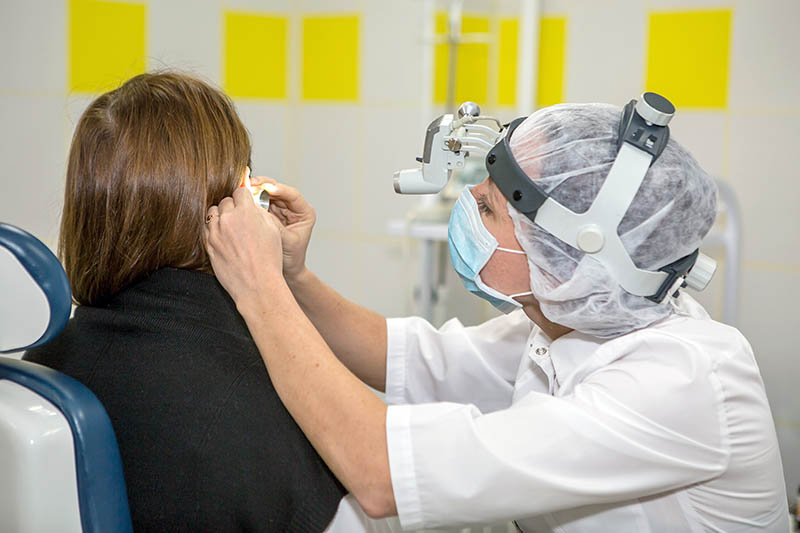
Hearing loss predominates in the United States, impacting roughly 48 million individuals. This affliction can significantly affect the communication, relationships, health, and career prospects of those who suffer from it. For individuals experiencing hearing loss, the possibility of undergoing surgery to restore their hearing may arise. However, for hearing loss surgery, the candidacy for ear surgery to restore hearing depends on the hearing loss experienced. It is important to note that only a tiny percentage of individuals with hearing loss may be suitable candidates for surgical intervention. Consulting with an otolaryngologist is essential for anyone considering any type of hearing loss surgery.
Hearing Loss Surgery: Ways to Correct Impaired Hearing
Sensorineural Hearing Loss
Sensorineural hearing loss is induced by the impairment of sensory hair cells, often due to aging or noise. Cochlear implants are presently the only therapeutic option, bypassing damaged hair cells to restore hearing.
Pressure equalization tubes
Ear infections in children can be painful and distressing for both the child and their caregivers. According to the American Academy of Otolaryngology, almost every child experiences at least one ear infection by age five. Although most such episodes resolve without causing permanent damage, chronic ear infections can lead to long-term hearing loss, poor academic performance, speech difficulties, and behavioral problems. Although PE tubes are most commonly used for toddlers and young children, adults with similar conditions may also benefit from the procedure. In addition to treating chronic ear infections, PE tube surgery may be recommended to address hearing problems associated with malformed eardrums, Eustachian tube dysfunction, Down Syndrome, or cleft palate. Given the potential benefits of PE tubes, healthcare professionals may consider this option for appropriate patients with chronic ear infections or related hearing difficulties.
Bone-anchor implants
This system comprises an implant inserted into the bone behind the ear and a hearing aid that fits securely over the implant. Upon sound detection, vibrations are transmitted through the bone and to the inner ear. These systems are well-suited for individuals with conductive hearing loss, including children with outer or middle ear malformations and those with single-sided deafness. It is worth noting that this system is only viable if there is at least one functioning inner ear.
Stapedectomy
Otosclerosis is a medical condition that can be addressed with a surgical procedure known as stapedectomy. This procedure entails the implantation of a prosthetic device designed to circumvent the abnormal hardening of bone tissue within the middle ear. Like atherosclerosis, which causes hardening of the arterial walls, otosclerosis involves an abnormal hardening of bone tissue within the middle ear. The National Institute of Deafness and Other Communication Disorders reports that otosclerosis affects up to 3 million Americans and typically occurs when the stapes bone within the middle ear becomes immobilized. As a result, the bone is incapable of producing vibrations that enable the transmission of sound through the ear, leading to hearing impairment. Otosclerosis symptoms include progressive hearing loss, dizziness, and tinnitus.
Conductive Hearing Loss
Conductive hearing loss refers to a condition in which there is an obstruction or impairment to the ear, stopping sound from being conducted to the inner ear. Depending on the reason for the blockage, this type of hearing loss may be temporary or permanent. Medical or surgical intervention may prove effective in restoring hearing. Diagnosing conductive hearing loss accurately is crucial, as the condition’s underlying cause may vary. The standard causes of conductive hearing loss are ear infections, allergies, fluid buildup in the middle ear, and a perforated eardrum.
Cochlear implants
Cochlear implants are intended for adults and children who cannot derive any benefit from conventional hearing aids for severe to profound hearing loss. Unlike traditional hearing aids, which only amplify sound, cochlear implants prompt the auditory nerve directly, bypassing the damaged part of the auditory system. Cochlear implant surgery is typically performed outpatient after evaluating the individual’s health. Most surgeons will only consider performing a cochlear implant surgery if the patient has attempted and failed to derive any benefit from traditional hearing aids. Due to the invasive nature of this surgery, it is generally reserved for patients with severe hearing impairment.
Surgery may only be a viable solution for some individuals. However, there is optimism that upcoming technologies will offer solutions to restore lost hearing. Currently, surgical interventions for hearing loss are limited to specific types of hearing loss. The majority of individuals with hearing loss benefit considerably from the usage of hearing aids. Regular hearing evaluations by a hearing healthcare professional are vital to managing hearing loss appropriately.